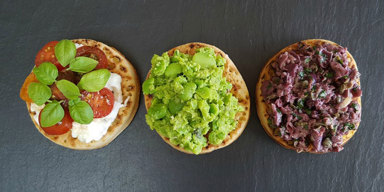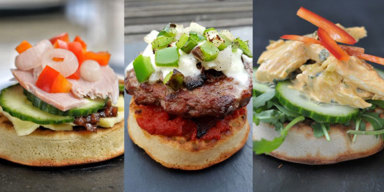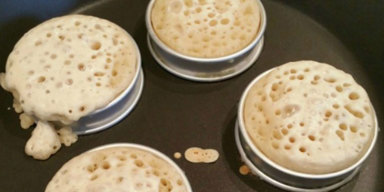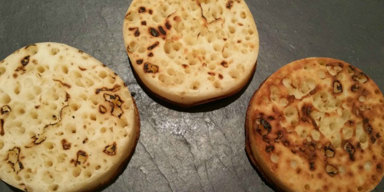How to cook crumpets
The national curriculum misses out on how to cook a perfect crumpets. Don’t panic: help is at hand.
I’m afraid our American cousins will have to google-translate all this as we can’t fathom all your broiling and such.
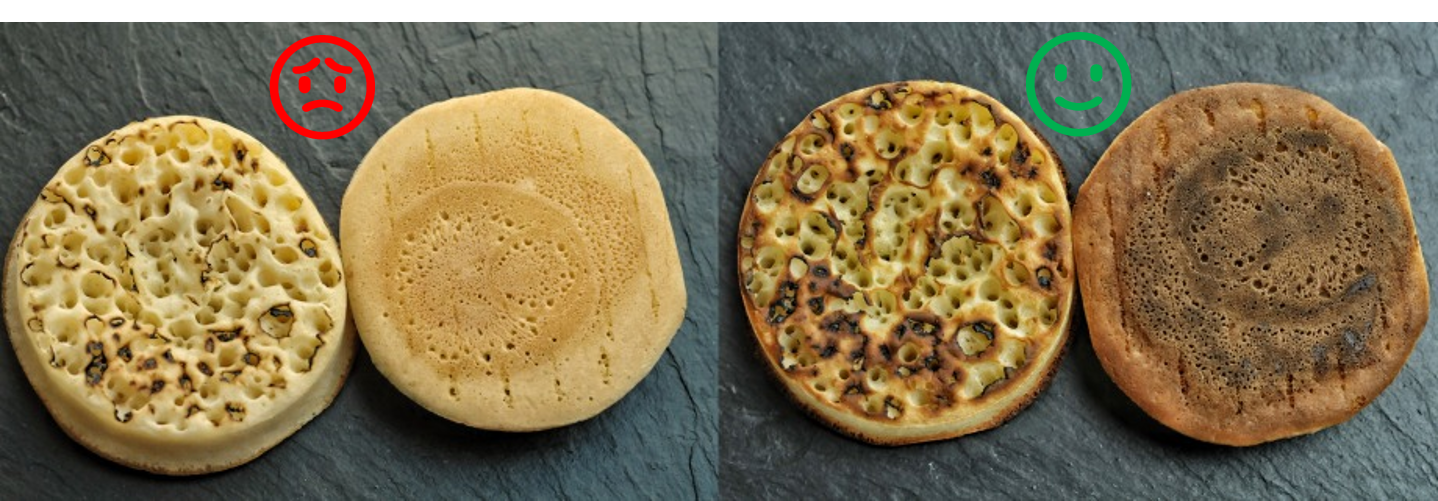
Matters of opinion
Yes, yes: everything is a matter of opinion. But I am Crumpetman; hear me roar.
General
Most people under-cook crumpets, so that they end up looking very much like the totally uncooked crumpets on the left above. As a result, they
are not at all crispy and they don’t develop the toasted flavour that they were born to provide.
The underside wants to be toasted to the point where it starts to blacken, while the top side wants to be crispy. Witness the crumpets on the right.
Grilling or toasting
Most people make the mistake of toasting crumpets. There are three principal problems with using a toaster:
- It's very difficult to get exactly the right finish on each side, because they each need a different treatment
- Toasters tend to cook at a lower heat than a grill, and the toasting process is therefore liable to dry out the crumpets
- Crumpets commonly get caught in toaster, tearing the crumpet and making it difficult to toast properly, and requiring knives in electrics to retrieve the residue
What you really need is a grill on a medium heat, with the crumpets about 2 inches away.
Barbecuing on a BBQ
Works really well. Please observe principles above.
Toasting on a fire
Probably also works really well, and potentially adds a cosy nostalgia, although you obviously need to pick a fuel that isn’t going to make the crumpets taste foul. Crumpetman lives in a smokeless zone, so hasn’t been able to test this, but will endeavour to get out into the sticks to do so soon.
Using crumpets in recipes
Crumpets generally benefit from butter, and this butter generally benefits from melting. But if you leave a crumpet buttered too long, or add moisture, it can end up disappointingly soggy.
In our recipes, we use the following varieties:
Hot-buttered
Butter applied to the crumpet straight from the grill, when:
- you are not putting anything hot on the crumpet; and
- you are eating immediately
Cold-buttered
Crumpet allowed to cool in a toast-rack or similar for at least 5 minutes, until cool and dry, before buttering. The butter will be melted when:
- you put a hot topping on the crumpet; or
- you are grilling the crumpet topping
Unbuttered
No butter at all, if the food accompaniment doesn’t work well with butter (obviously rare)

